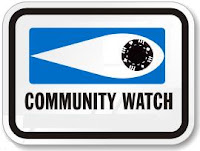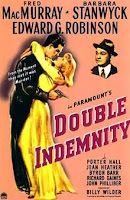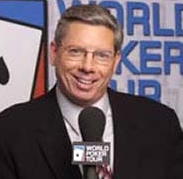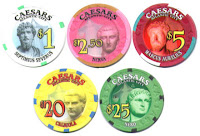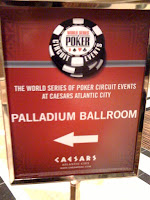Bluffing and Nothingness
 Have been playing tourneys more often lately, including this $40K guarantee they run on PokerStars every night at 8:00 p.m. Eastern time. Normally I don’t play much at night, preferring to spend the time with Vera Valmore, but she was away at a conference and so I once more hopped in the game.
Have been playing tourneys more often lately, including this $40K guarantee they run on PokerStars every night at 8:00 p.m. Eastern time. Normally I don’t play much at night, preferring to spend the time with Vera Valmore, but she was away at a conference and so I once more hopped in the game.This particular $40K guarantee is a rebuy tourney -- just $3 plus 30 cents to start, then $3 for each rebuy or add-on -- with a relatively slow structure (15-minute levels). The rebuy period lasts an hour and is often characterized by the gambly shenanigans one frequently sees in rebuy events. However, thanks to the long levels I found it’s usually possible to be patient and wait for a good spot to double-up for free.
I’ve been doing okay in these, cashing enough to make for a decent-looking ROI. Even a min-cash tends to approach $20, not bad if you can manage to get through the rebuy period without laying out too much.
Also, this particularly tourney seems frequently to have overlays, or at least there have been the times I’ve played ’em. For example, last night there were 3,370 players, 6,040 rebuys, and 2,182 add-ons. That meant a total of $34,776 had been contributed by the field, so Stars added $5,224 to the prize pool to make the guarantee.
I did cash last night. Had an okay stack going for much of the way, then was below average (down to about 16 big blinds) when I ran

 into pocket kings to go out earlier than I’d have liked.
into pocket kings to go out earlier than I’d have liked. Had one hand in particular I enjoyed quite a bit, one in which I open-raised from the button with 8-2-offsuit and got a caller, then double-barrelled to take it down on the turn with my eight-high. Nothing too special, really, but the hand came right before a break and won me a decent-sized pot, carrying my total close to its highest point of the evening. So I had five minutes to get a drink of water and congratulate myself. And think of Cool Hand Luke.
Earlier in the day in my “Poker in American Film and Culture” class I’d shown that well-known clip from the great 1967 film directed by Stuart Rosenberg and starring Paul Newman, perhaps one of the best, smartest poker scenes in any movie. You know what I am referring to, the scene involving a five-card stud hand in which Luke (Paul Newman) picks up his nickname:
After showing the clip I asked the class to respond to that line “sometimes nothing can be a real cool hand.” Has a kind of obvious meaning in poker, I suppose, referring to the fact that it can be easier to bluff with nothing at all than with a hand of marginal value. Sometimes, anyway.
But I asked the students to think about the phrase in a broader context, relating it to the so-called “American” themes (e.g., freedom, independence, etc.) we’ve been saying poker tends to illustrate. Not to get all lecture-like here, but it doesn’t take too much cogitatin’ to see how the line represents more than just a neat thing to say after successfully running a bluff. It’s an entire “philosophy” or world-view, really, one which I think we see illustrated in a variety of ways in the U.S.
I’ll leave you to think about what I might be getting at there. Sort of like a teacher might do. Or someone who is bluffing.
Labels: *on the street, Cool Hand Luke, no-limit hold'em, Poker in American Film and Culture, tournaments


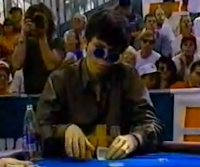


 . (Later in the column, Hellmuth refers to “Ungar’s raise of 40,000,” echoing Kaplan.)
. (Later in the column, Hellmuth refers to “Ungar’s raise of 40,000,” echoing Kaplan.) . Strzemp meanwhile tables
. Strzemp meanwhile tables 
 , meaning he is well ahead of Ungar. Hellmuth notes that “Ungar needed to catch a 4 or deuce to win,” then reports how the
, meaning he is well ahead of Ungar. Hellmuth notes that “Ungar needed to catch a 4 or deuce to win,” then reports how the  came on the turn.
came on the turn. then happily arrives for Ungar, giving him the straight and the title, but obviously a four would’ve still done it for him there, too.
then happily arrives for Ungar, giving him the straight and the title, but obviously a four would’ve still done it for him there, too. 



